|
|
Please click on a category to view products.
|
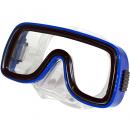 | Masks MASK
What It Does: The mask creates an air space in front of your eyes that allows them to focus under water. The nose pocket allows you to equalize the air pressure in your mask as you go deeper. (You'll learn about that in class.)
What to Look For: A good watertight fit. Our experts have come up with this six-step plan for foolproof mask fitting:
|
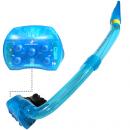 | Snorkels SNORKELS
It seems simple enough: a curved tube that lets you breathe while floating face-down on the surface. Yet, as you look at the wide variety of snorkels at your local dive shop, you'll see an array of options and features to choose from. Don't worry.
Stay focused on the basics.
What It Does: As a diver, you primarily use a snorkel to conserve air in your tank when on the water's surface.
What to Look For: Comfort. You want a mouthpiece that feels good in your mouth and that breathes dry and easy. The problem is, most attempts to keep snorkels dry also make them bulkier and harder to breathe through. The snorkel for you is one with a good compromise between ease of breathing and dry comfort. Remember, the bigger a snorkel is, the more drag it creates in the water. Also important: how the snorkel attaches to your mask. Look for a durable yet simple and easy-to-operate attachment.
|
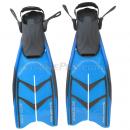 | Fins FINS
Fish don't have legs for the simple reason that fins are the best way to move through water. So if you're going to play in the fish's territory, you need a good set of flippers too.
What They Do: Fins translate power from the large leg muscles into efficient movement through water, which is 800 times denser than air.
What to Look For: Comfort and efficiency. When trying on fins, look for a snug fit that doesn't pinch your toes or bind the arches of your feet. If you can't wiggle your toes, the fins are too small.
Efficiency of fins is largely determined by their size and stiffness. Divers with strong leg and hip muscles can efficiently use a bigger, stiffer fin. Smaller divers or less conditioned divers will be more comfortable with smaller, more flexible fins. Finally, make sure buckles and straps are easy to use.
|
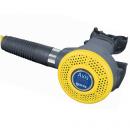 | Regulators, Compuers, More REGULATORS
The good news: Among major-label regulators—the kind sold in dive stores—there is no junk. Regulators have been perfected to the point that even budget regulators can offer high performance. However, you must do your homework before buying this vital piece of gear.
What It Does: Converts the high-pressure air in your tank to ambient pressure so you can breathe it. A regulator must also deliver air to other places, such as your BCD inflator and alternate second stage.
|
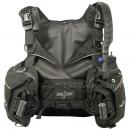 | Buoyancy Compensators BUOYANCY CONTROL DEVICES
The BCD is the most complex piece of dive equipment you'll own and one of the most important. So choose carefully based on the style of diving you'll be doing most.
What It Does: What doesn't it do? It holds your gear in place, lets you carry a tank with minimal effort, floats you at the surface and allows you to achieve neutral buoyancy at any depth.
|
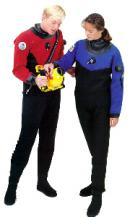 | Dry Suits Form-fitting exposure suits are usually made of foam neoprene rubber (wetsuits) or spandex-like materials (skins), sometimes with fleece added.
What They Do: Exposure suits trap a thin layer of water between the suit and your skin to insulate against heat loss. Even warm water can rob your body of heat 25 times faster than air (that's another fact you're likely to be tested on in class). The thickness and type of exposure protection you need depends on dive conditions. Simple Lycra suits provide little thermal insulation but do help protect from scrapes and stings.
|
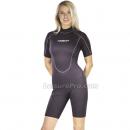 | Wet Suits Form-fitting exposure suits are usually made of foam neoprene rubber (wetsuits) or spandex-like materials (skins), sometimes with fleece added.
What They Do: Exposure suits trap a thin layer of water between the suit and your skin to insulate against heat loss. Even warm water can rob your body of heat 25 times faster than air (that's another fact you're likely to be tested on in class). The thickness and type of exposure protection you need depends on dive conditions. Simple Lycra suits provide little thermal insulation but do help protect from scrapes and stings.
|
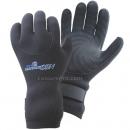 | Gloves, Hoods and Booties Gloves, Hoods and Booties
|
 | Assessories Assessories Description
|
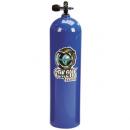 | Tanks Tanks Description
|
Classes
|
Packages Quality packages at a value price.
|
 |
|
|